Where to dig in?
For the best indoor plants, you’ll want to start with air-purifying plants like snake plants, peace lilies, and spider plants, which remove toxins while boosting your mood and productivity. Choose low-maintenance options such as ZZ plants or aloe vera if you’re busy, since they thrive on minimal care. Match your plants to available light conditions—succulents need direct sunlight, while pothos excel in low-light areas. Strategic placement in bedrooms, workspaces, and living areas creates therapeutic benefits that extend far beyond basic decoration.
Health Benefits of Having Plants Indoors
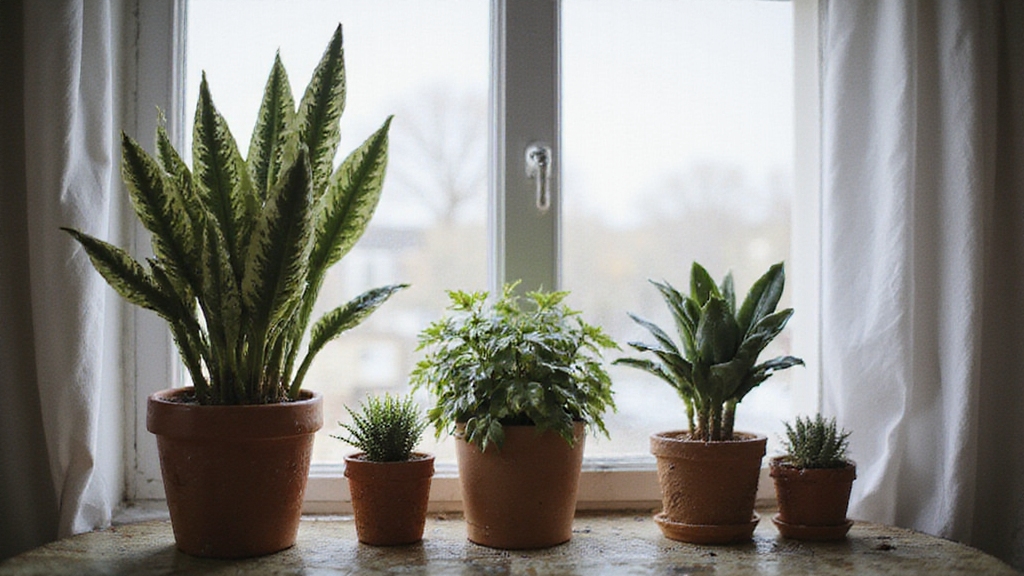
When you bring plants into your home, you’re not just adding decoration – you’re creating a natural wellness system that benefits your mind and body in remarkable ways.
Mental Health and Stress Relief
Your stress levels drop considerably when you’re around indoor plants. These green companions lower your heart rate, reduce blood pressure, and help you feel more relaxed throughout the day. You’ll notice improved concentration and better focus, especially during demanding tasks that require sustained attention. Gardening apps can assist in selecting the right plants for your environment, enhancing the overall wellness benefits.
Cognitive and Mood Benefits
Plants boost your mental well-being by enhancing your mood and reducing anxiety. You’ll experience better productivity, whether you’re working from home or studying. The therapeutic effects of caring for plants provide emotional comfort, while their presence creates a calmer, more positive environment that supports your overall mental health naturally. Employees in offices with plants feel better about their jobs and worry less.
Top Air-Purifying Plants for Better Indoor Quality
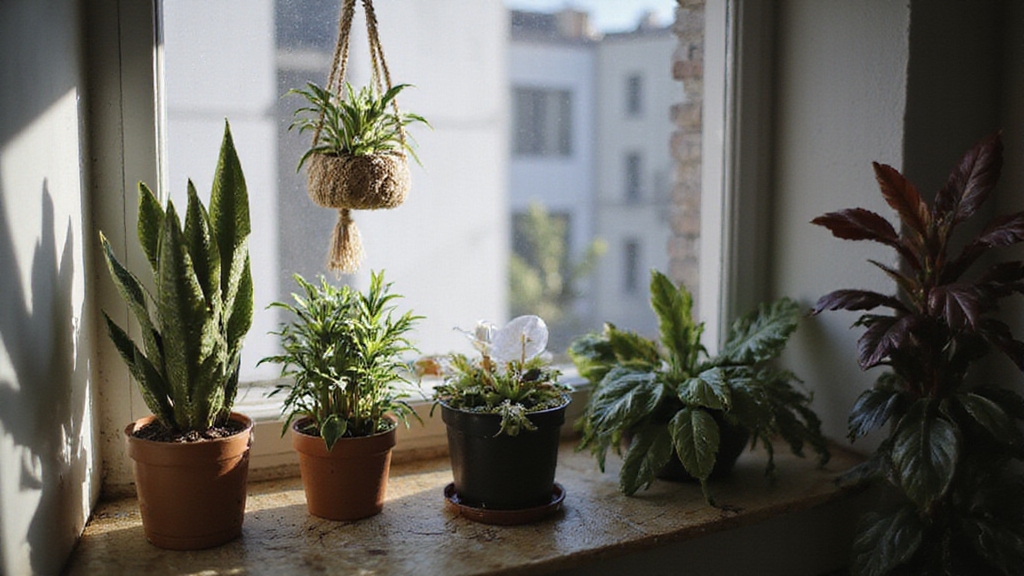
Beyond enhancing your mental well-being, plants actively clean the air you breathe by removing harmful toxins that accumulate in your home. These natural air purifiers eliminate dangerous compounds like formaldehyde, benzene, and xylene from furniture, paint, and household products. Additionally, many low-maintenance houseplants can brighten modern spaces while providing these health benefits.
| Plant | Toxins Removed | Care Level |
|---|---|---|
| Snake Plant | Formaldehyde, benzene, xylene | Beginner-friendly |
| Peace Lily | Ammonia, formaldehyde, benzene | Medium maintenance |
| Spider Plant | Xylene, formaldehyde | Easy care |
You’ll find these plants work continuously, absorbing pollutants through their leaves and roots while boosting oxygen levels. The Snake Plant thrives in low light, making it perfect for bedrooms. Peace Lilies produce beautiful white blooms while filtering air. Spider Plants require minimal attention, ideal for busy households seeking cleaner indoor air. A single Spider Plant can effectively filter air in a 200 square foot room.
Low-Maintenance Plants Perfect for Busy Lifestyles
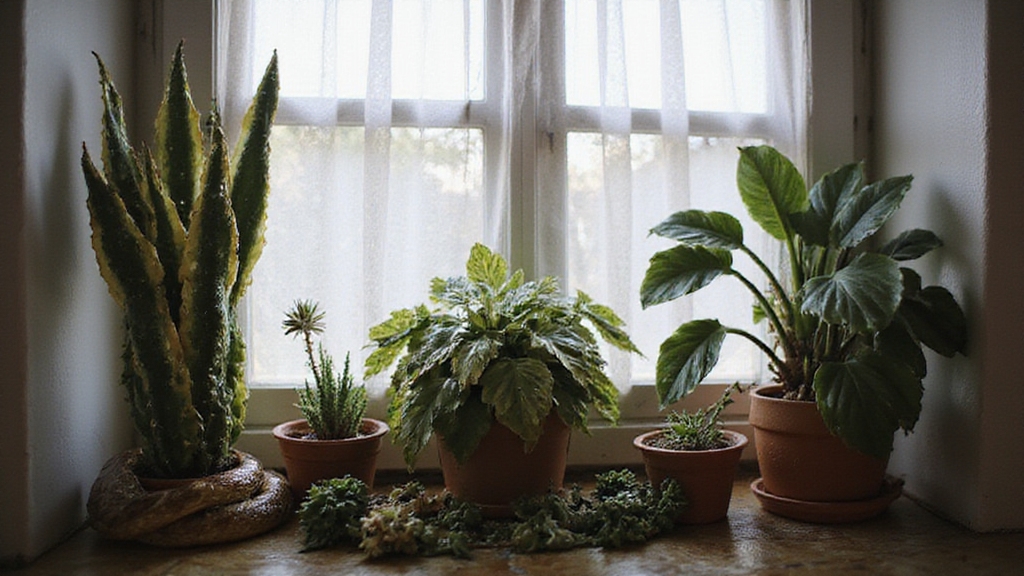
Busy homeowners don’t need to sacrifice greenery for convenience when selecting the right indoor plants. These low-maintenance options thrive with minimal attention, perfect for your hectic schedule.
Top Low-Maintenance Plant Choices
- Snake Plant – Purifies air naturally, tolerates low light conditions, and requires infrequent watering
- ZZ Plant – Survives in dark corners, needs water only when soil dries completely
- Aloe Vera – Offers healing benefits, thrives on neglect, stores water in thick leaves
- Money Tree – Brings good fortune, prefers bright indirect light, forgives missed waterings
Ensure your indoor plants have access to a soil structure that is both moisture-retentive and well-draining to promote healthy growth. These resilient plants adapt to your busy lifestyle without compromising your home’s aesthetic appeal. You’ll spend minutes, not hours, maintaining them each week. The Snake Plant is particularly nearly impossible to kill, making it ideal for beginners. Choose varieties that match your lighting conditions and watering habits for guaranteed success.
Choosing the Right Plants Based on Light and Space
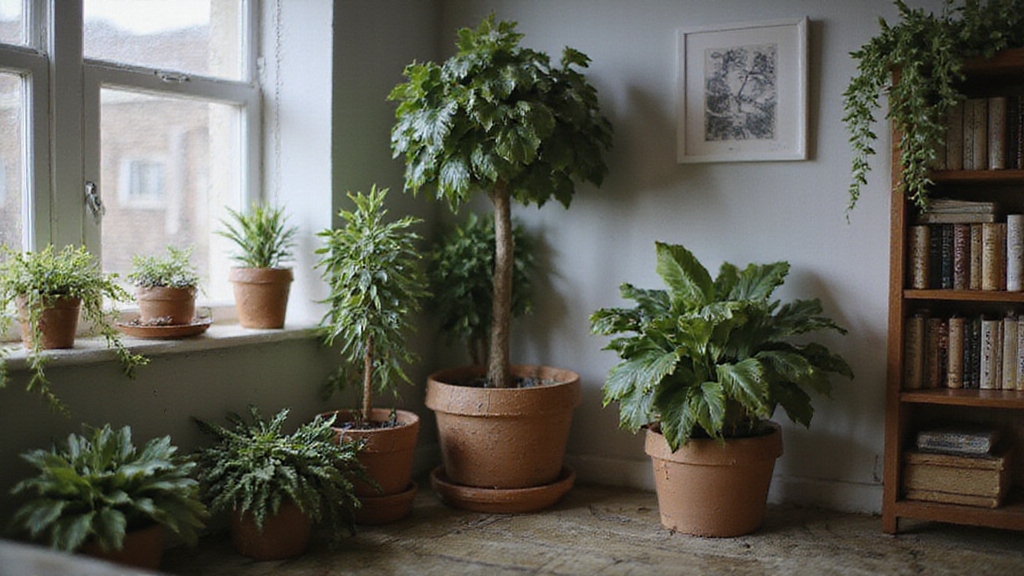
Selecting the perfect plants for your home requires understanding both your available light conditions and physical space constraints. You’ll need to assess your room’s dimensions, window placement, and daily light exposure to make smart choices. It’s also important to understand the benefits and characteristics of loamy soil, as it provides excellent drainage and moisture retention, which is ideal for a wide range of plants.
Start by measuring light levels with a light meter, or simply observe how sunlight moves through your space throughout the day. South-facing windows provide direct sunlight, while east and west windows offer bright indirect light.
| Light Type | Best Plant Examples |
|---|---|
| Direct Sunlight | Succulents, Flowering Plants |
| Bright Indirect | Ferns, Peace Lilies |
| Low Light | Chinese Evergreen, Pothos |
| Partial Shade | African Violets |
| Adaptable | Philodendron Species |
Consider vertical planters, hanging baskets, or shelf displays to maximize limited space while ensuring proper light access. A hand-held, digital light meter will give you the most accurate readings to determine which plants will thrive in each location.
Creating a Therapeutic Home Environment With Greenery
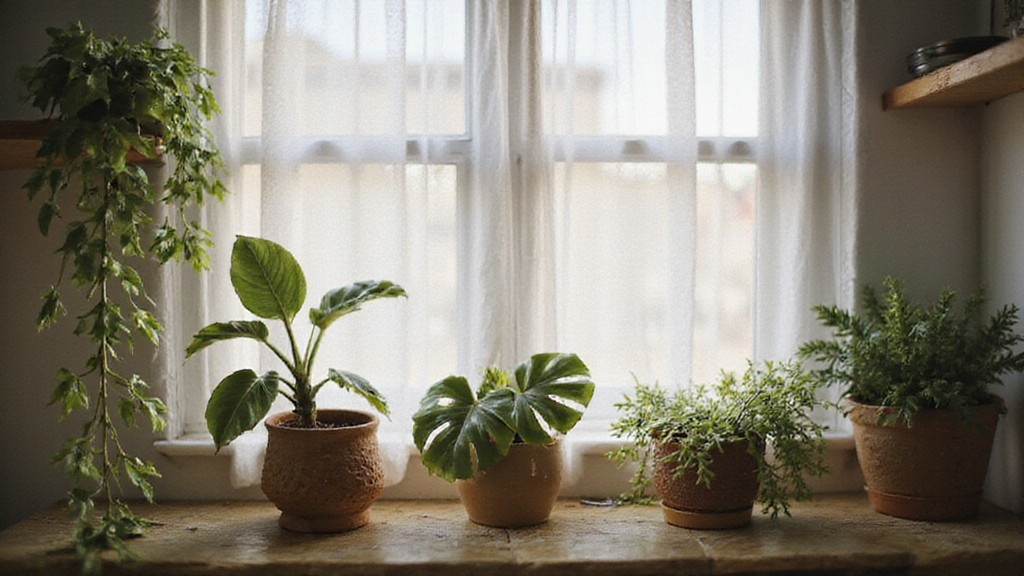
Five powerful ways exist to transform your living space into a natural healing sanctuary that actively improves your physical and mental well-being. Plants create therapeutic environments by reducing stress, lowering blood pressure, and boosting cognitive function through natural sensory engagement. Adding beginner gardening books can enhance your understanding of plant care, ensuring you select the right species for your indoor environment and maintain them effectively.
Position plants strategically throughout rooms where you spend the most time. This placement maximizes their stress-reducing benefits and creates multiple points of natural connection. You’ll experience measurable improvements in focus, attention, and mental clarity when live greenery surrounds your daily activities.
Consider these therapeutic placement strategies:
- Bedroom corners for improved sleep quality and morning mood enhancement
- Workspace areas to reduce fatigue and increase concentration by 20-25%
- Living room focal points for family stress reduction and emotional comfort
- Hallway passages to create calming pathways between spaces
Caring for plants provides therapeutic activity, offering accomplishment and purpose while connecting you with nature’s restorative effects. People recuperating from surgery experienced shorter hospital stays when looking at greenery during their recovery period.
Frequently Asked Questions
How Often Should I Water My Indoor Plants?
You should check your indoor plants’ soil moisture weekly by touching the top two inches. Water when this layer feels dry, which typically occurs every 7-24 days depending on your plant type.
Tropical plants need more frequent watering than succulents. Adjust your schedule seasonally – water more often during summer’s heat, less during winter’s cooler months.
What Are the Best Fertilizers for Houseplants?
You’ll find balanced fertilizers like 10-10-10 work best for most houseplants. Choose liquid fertilizers for quick nutrient boosts, applying every 1-2 weeks during spring and summer.
Slow-release options like Jobe’s Organics spikes provide consistent feeding with less maintenance. Foliage plants need higher nitrogen ratios, while flowering plants benefit from extra phosphorus.
Always dilute liquid fertilizers to prevent root burn, and reduce feeding during winter months.
How Do I Repot My Plants When They Outgrow Their Containers?
You’ll know it’s time to repot when your plant looks too large for its container or roots grow through drainage holes.
First, gently remove the plant by turning it sideways and tapping the pot. Loosen the roots with your hands, then choose a pot that’s 1-2 inches larger with drainage holes.
Add fresh potting mix, place your plant, and water thoroughly.
Can Indoor Plants Attract Bugs or Pests to My Home?
Yes, indoor plants can attract bugs to your home, but the risk is much lower than outdoor gardens. Common pests include fungus gnats, aphids, scale insects, and whiteflies.
You’ll prevent most infestations by avoiding overwatering, which creates moist soil that attracts fungus gnats. Monitor your plants weekly, maintain good plant health, and inspect them before bringing outdoors plants inside.
What Should I Do if My Plant’s Leaves Are Turning Yellow?
First, identify the cause by checking your watering schedule, light exposure, and soil drainage. If you’re overwatering, let the soil dry between waterings.
Move your plant to brighter light if it’s in a dim spot. Remove yellowing leaves with clean scissors to redirect energy to healthy growth. Apply balanced fertilizer if nutrient deficiency seems likely, and inspect for pests underneath leaves.
Conclusion
You’ve learned how indoor plants can boost your health, clean your air, and fit seamlessly into your busy life. Start with one low-maintenance plant that matches your home’s lighting conditions. Place it where you’ll see it daily, water it consistently, and watch how it transforms your space. As you gain confidence, you’ll naturally want to add more green companions to create your own therapeutic indoor garden sanctuary.

